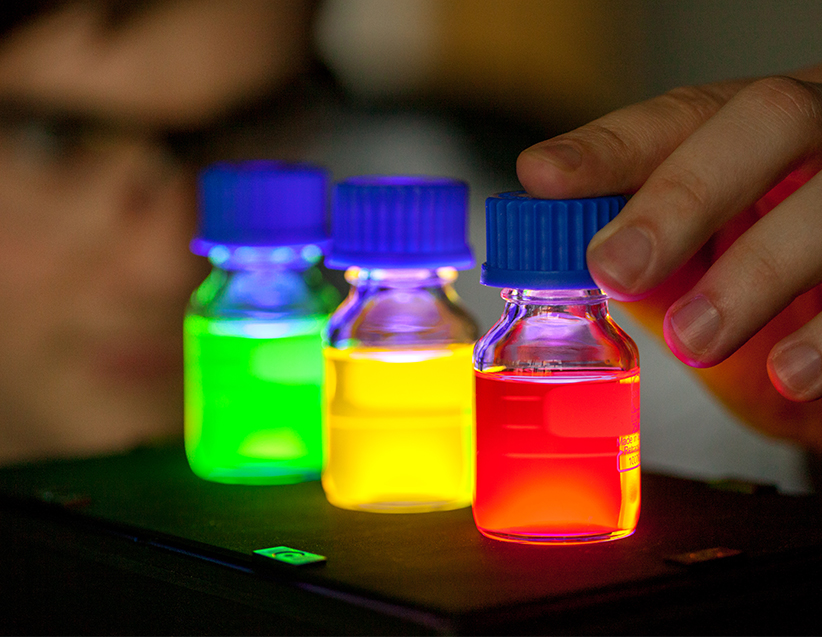Quantum dots (QD) and quantum rods (QR) are a class of nanomaterials that utilize quantum effects to emit light. This enables them to be used to efficiently generate extremely brilliant colors. Their absorption and emission properties can be uniquely adjusted by altering particle size or shape. The surface of the particles can be modified in order to adapt them to the chemical environment. The materials can be produced so that they emit both in the visible and infrared spectrum. These extraordinary properties enable them to be used in a wide variety of applications, for example as phosphors in display technology, to convert light to higher wavelengths in photovoltaics, as sensor materials, or as security features on banknotes.
Until now, QDs have contained cadmium which is a toxic heavy metal. The Fraunhofer IAP therefore synthesizes cadmium-free QDs that are just as powerful as the QDs containing cadmium and which achieve high quantum yields. They are based, for example, on environmentally friendly indium phosphide or zinc sulfide and can be used as fluorescent materials for LEDs, as an emitter material in QD LEDs, as color filters in displays and for the LED backlighting of LCDs. Infrared active QDs based on copper indium phosphide can also be deployed as solar concentrators to increase the efficiency of solar cells.
Continuous flow reactors allow up to several grams of QDs to be produced per hour. These can then be inkjet printed onto solid and flexible substrates using ink formulations. The Fraunhofer IAP has both a »printer farm« and a pilot plant for producing QD LEDs and solar cells.
 Fraunhofer Group for Materials and Components - Materials
Fraunhofer Group for Materials and Components - Materials